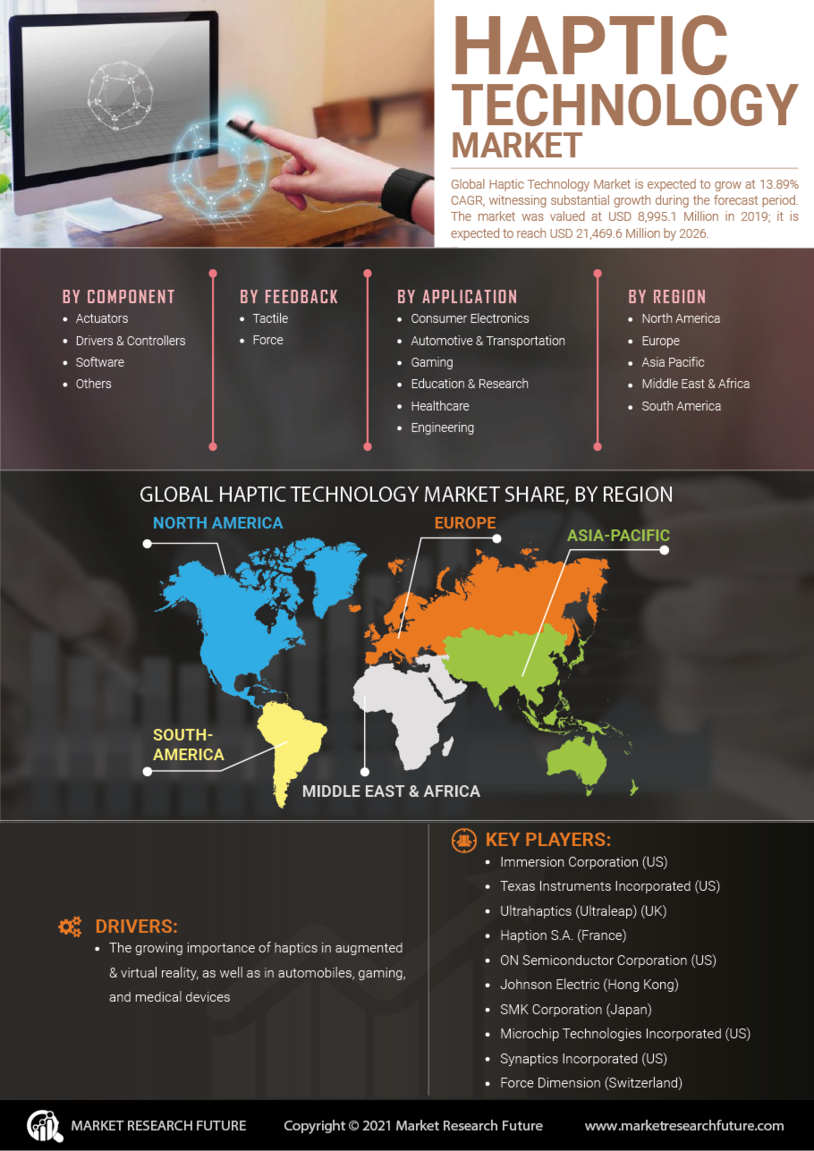Haptic Technology Market Summary
As per MRFR analysis, the Haptic Technology Market Size was estimated at 13.62 USD Billion in 2024. The Haptic Technology industry is projected to grow from 15.52 USD Billion in 2025 to 57.02 USD Billion by 2035, exhibiting a compound annual growth rate (CAGR) of 13.9 during the forecast period 2025 - 2035.
Key Market Trends & Highlights
The Haptic Technology Market is poised for substantial growth driven by diverse applications across various sectors.
- The market is witnessing a notable integration of haptic technology in consumer electronics, enhancing user interaction.
- Advancements in medical applications are expanding the scope of haptic technology, particularly in surgical simulations and rehabilitation.
- The automotive sector is experiencing rapid expansion in haptic technology, improving driver feedback and safety features.
- Key market drivers include the rising demand in the gaming industry and the growth in virtual reality applications, particularly in North America and Asia-Pacific.
Market Size & Forecast
| 2024 Market Size | 13.62 (USD Billion) |
| 2035 Market Size | 57.02 (USD Billion) |
| CAGR (2025 - 2035) | 13.9% |
Major Players
Immersion Corporation (US), HaptX (US), Ultraleap (GB), SenseGlove (NL), Novint Technologies (US), Tactai (US), AxonVR (US), Force Dimension (CH), 3D Systems (US)

















Leave a Comment